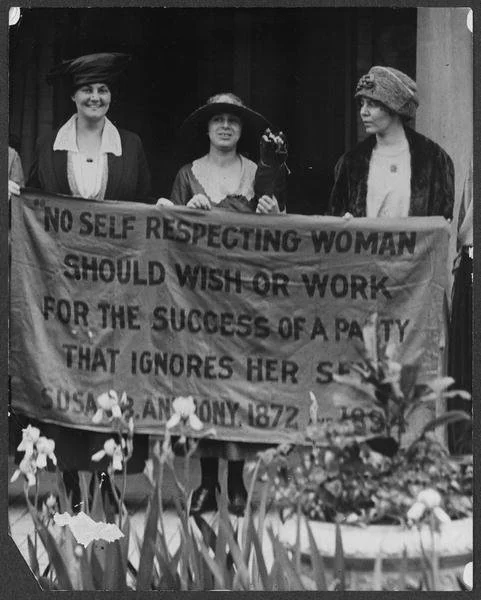Kenyon Hayden Rector, Architect and Suffragist
Florence Kenyon Hayden (1882 – 1973) was raised by and as a supporter of women’s rights. After her father died in 1892, her mother Kate Bemis Hayden moved her daughters from St. Louis to Columbus, Ohio. Kenyon (who dropped the “Florence” at a young age), her sister Gillette, and her mother became members of the National Woman’s Party and fought for passage of the 19th Amendment recognizing women’s right to vote.
Kenyon Hayden was one of three women enrolled in the architecture program at Ohio State University (OSU) in 1901. Although she didn’t finish her degree, she did impress campus architect and professor Joseph Bradford with whom she studied. Bradford recommended Hayden to design OSU’s first woman’s dormitory. In 1905 and 1906, newspapers across the nation reported on the award of this project to Hayden and two female colleagues, often under the heading “Built by Girl Architects.”
Postcard of Oxley Hall, c. 1910. (Cott Printing Co., Publisher)
OSU’s Board of Regents apparently had second thoughts and required Hayden to work with established local male architect Wilbur T. Mills. It is believed that the design is Hayden’s, although both collected fees. The forced partnership did not go smoothly. Later in life, Hayden recounted locking Mills out of her office so she could finish her drawings without his interference. Oxley Hall opened in 1908.
Kenyon Hayden had her own practice and is not known to have had any partners on future projects. She was one of the first, if not the first, women to earn her architectural license in Ohio. She is also thought to be the only woman practicing architecture in central Ohio for the first three decades of the 20th century.
In 1910, Hayden married physician James Rector. She added his name to hers, thereafter calling herself Kenyon Hayden Rector. Not long after her marriage, she designed a medical building for her husband that was recognized as a model of modern efficiency. The building has since been demolished. She designed several other medical and commercial buildings in the Columbus area.
Hayden Rector also designed a number of houses. A summer cottage she completed on an island lake east of Columbus a few months prior to her marriage earned an article in the Ohio State Journal. Newspapers as far away as Arizona reprinted the article that described the cottage as “a perfectly natural part of the charming island, so that one is impressed with the idea that it must have grown along with the trees and shrubs and other graceful adornments of the place.” In fact, the article continued, it was created by “a very capable young woman. And this miracle of quick homemaking was effected by one of the ultra modern type of home builders, the woman architect, as personified by Miss Kenyon Hayden.”
L-R: Kenyon Hayden Rector, Mary Dubrow, and Alice Paul at the 1920 Republican convention. (Library of Congress)
Hayden Rector continued her architectural career through at least the 1930s, well after her marriage and the birth of two children. She also kept advocating for women’s rights. She traveled to campaign for ratification and wrote “Women Awake!” a history of the movement and call to action. Once the 19th Amendment passed, Hayden Rector’s activism didn’t stop. She worked for better working conditions for women, prison reform, and on children’s issues.
Kenyon Hayden Rector died in 1973 when she was about 91 years old.
Please subscribe to The Architectress.
Sources:
“A Home Built in Thirty Days,” Arizona Republican. July 15, 1910, Page 6.
Lisa Wood, “New Acquisition of Kenyon Hayden Architecture Portfolio.” Ohio History Connection, August 5, 2022.
PBS, “Columbus Neighborhoods: Florence Kenyon Hayden Rector.” April 18, 2019.
Sarah Allaback, The First American Women Architects (Urbana and Chicago: University of Illinois Press, 2008).
Ancestry.com

